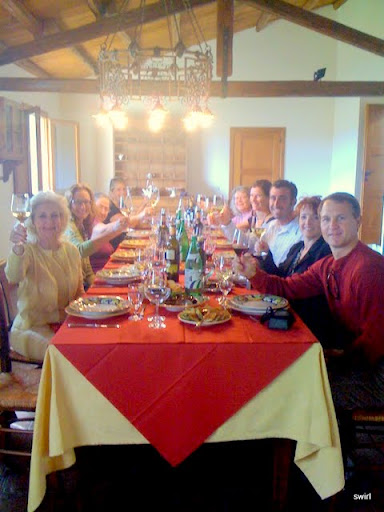 You may remember that I first talked about the 2007 Pietradolce Archineri when I posted my top 10 wine experiences of 2009. Brought in by our friend Matt Lirette, who thankfully has come to share my love for the Etna region and the Nerello Mascalese grape, this is such a beautiful, approachable expression of the varietal that I could hardly contain myself when it arrived in the shop on Friday. I've been bugging Matt about this wine ever since he got me a sample from North Berkley imports 6 months ago. He promised he would order it for me, but he thought the 2007 was out of stock, so it would probably be the 2008. Well I can't tell you how ecstatic I was when I open the box and pulled out a bottle of '07 and thinking it was just a fluke, I pulled out every bottle and all were the of the same delicious vintage I had last year. So I called him to please send me more.
You may remember that I first talked about the 2007 Pietradolce Archineri when I posted my top 10 wine experiences of 2009. Brought in by our friend Matt Lirette, who thankfully has come to share my love for the Etna region and the Nerello Mascalese grape, this is such a beautiful, approachable expression of the varietal that I could hardly contain myself when it arrived in the shop on Friday. I've been bugging Matt about this wine ever since he got me a sample from North Berkley imports 6 months ago. He promised he would order it for me, but he thought the 2007 was out of stock, so it would probably be the 2008. Well I can't tell you how ecstatic I was when I open the box and pulled out a bottle of '07 and thinking it was just a fluke, I pulled out every bottle and all were the of the same delicious vintage I had last year. So I called him to please send me more.Anyway, since that evening when I first had it back in December, I've done a bit of research on the wine. The grapes for the Pietradolce come from vineyards near Solicchiata, on the north eastern slopes of the volcano where many of the prominent producers such as Passopisciaro, Frank Cornelissen, Terre Nere and a handful of others have staked their claim on the ancient volcanic soils. Winemaker Michel Faro at Pietradolce uses grapes from 50-60 years old vines grow at a dizzying 2,600 foot altitude, pushing their way up out of thick, black soils, a generous gift of the Etna, which are a mix of sandy loam, volcanic rock and mineral elements. It is 100% Nerello Mascalese and spends 14 months in French oak. And believe it or not, the 2007 was their first vintage!
I also found out that a few other also thought this wine was pretty spectacular as Gambero Rosso gave it their prestiges Tre Bicchieri award, given to less than 300 wines per year. So just what do you get with the Archineri? Another wine that reinforced for me the amazing things that can come from this grape! A heady perfume of red fruits, baking spices and caramel literally jump from the glass, with lush, almost jammy flavors of plum, raspberries and oranges coat your palate. And it is approachable now, unlike some of the other Etna Rosso I've had recently. But, quantities are very limited and I can sell no more that 2 bottles per person, so call if you are interested.
A Tre Bicchieri wine, from the slopes of the Etna, of this caliber and in my shop at under $40 a bottle...unbelivelable!
Thank you Matt!!







